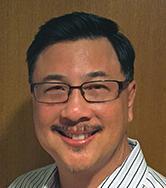From David’s Desk
I began writing this column early in February, intending to focus on Black History Month and to highlight a few countywide events and activities. Then the shootings occurred in Parkland, and the world’s attention turned to yet another gun violence tragedy.
As public health officials we naturally view these events through
a health and safety lens. As the director of a county behavioral
health system of care, it is my responsibility to identify
factors that impact the health and well-being of people living in
our community.
Mass school shootings are especially heart-wrenching because
schools are supposed to be safe havens where kids can focus on
learning. But as these events remind us, schools are actually a
microcosm of our larger society. We cannot expect to make schools
safer without addressing risk factors that occur in the community
at large. Gun violence is a major public health risk factor,
especially for certain groups.
According to the CDC, approximately 33,000 people in the U.S. die
from gunshot wounds each year. This has been tending upward in
recent years. Suicide accounts for 63 percent of these deaths,
and about 35 percent are homicides (the remaining cases are
accidents, lethal shooting by law enforcement or
undetermined).
As of March 7, there have been 2,595 deaths by gunshot this year.
106 of those were children under 12 yrs. old, and 494 were teens
13-17 yrs. old. When the data is broken down by race, white
persons account for only 19 percent of homicides; for whites, 77
percent of deaths are from suicide. But for African-Americans 82
percent of deaths are homicides and 14 percent are suicides. Our
young African-American young men are most at risk of gun
related deaths with 89 per 100,000 dying each year, twice the
rate of young white men. That rate is higher than the murder rate
in Honduras, which is considered the most dangerous, non-wartime
country in the world – at its peak in 2011, Honduras’ murder
rate, mostly from firearms, was 88.5 deaths per 100,000
people.
Fortunately, San Mateo County has fared much better than other
parts of the country and other parts of the Bay Area with regard
to gun violence. California and our county’s stricter gun laws on
sales and carrying a firearm contribute to lower gun deaths
compared to other parts of the country. However, sadly we do
continue to experience shooting deaths in the county. The most
recent victims were two young adults killed in Daly City last
week.
Of course, there are multiple complex factors that contribute to
community violence and the use of guns. But in a society where we
have tremendous resources yet extraordinary inequities, we must
learn to understand health issues in the context of social
justice in our larger society. I am dedicated to pursuing
solutions and ask you to join me in developing them to ensure a
healthy future for our youth.
